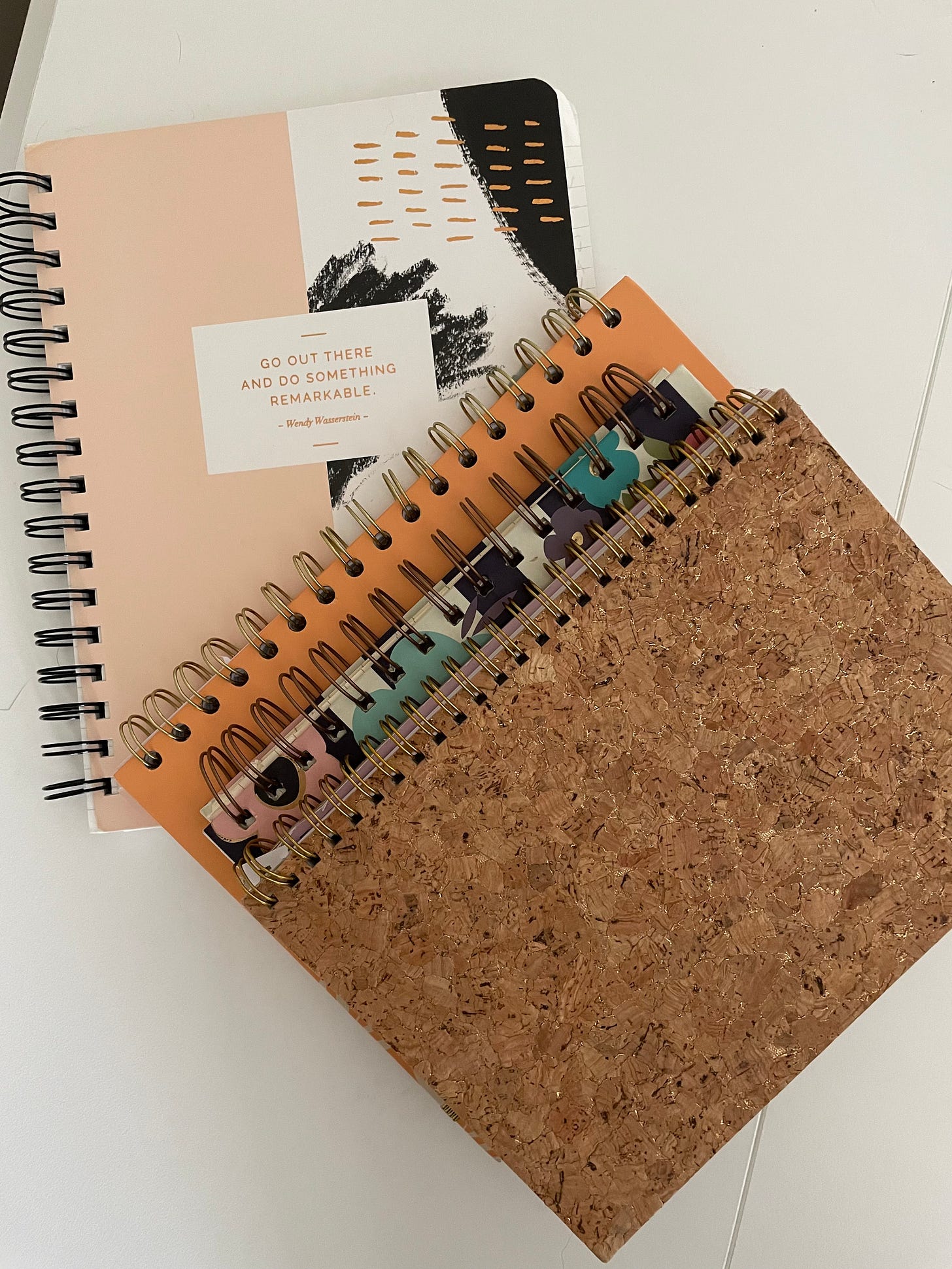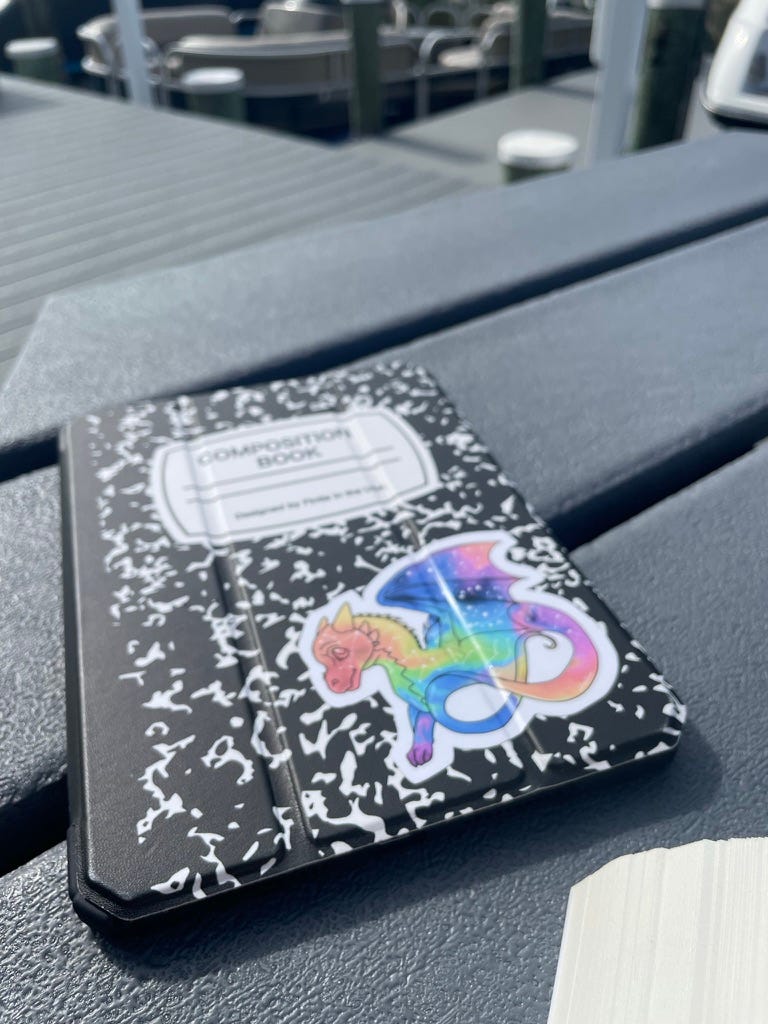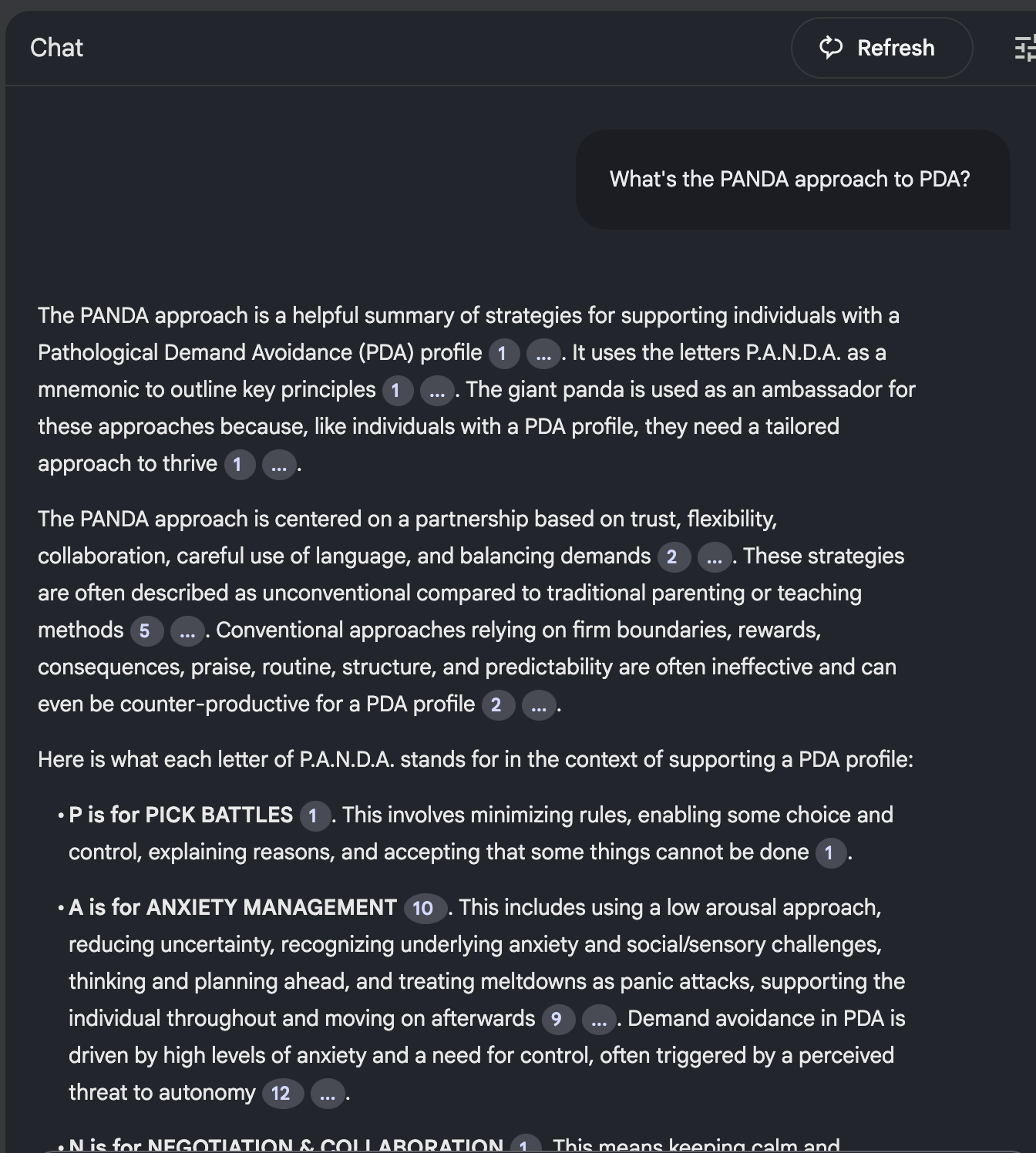Notebooks and NotebookLM
Google's NotebookLM just won three Webby awards! I wasn't sure I'd use it the first time I saw it, but it quickly became one of my favorites. What is it, though?
How much do you love cracking open a brand-new notebook?
Let me count the ways.
Okay, I’m not really going to count, but I’d be a liar if I said it didn’t bring me a specific kind of joy (and dopamine), especially when the texture of the pages lets them turn just right, and the lines are spaced just enough for my messy handwriting to jot down thoughts, to-do lists, and idea after idea without smudging or smearing the best of the best pens (G2s, of course).
Do you think we could do personality profiling by the notebooks we choose?
I’m a spiral-bound girl, don’t judge. I tried so hard to be a Moleskin, bound-all-the-way-down-the-side, bullet journal kinda person, but it’s just not me. Besides spending an incredible amount of time creating and decorating the notebook rather than actually writing stuff down and getting shit done, I need to be able to rip a page out at any point that it becomes too messy, too chaotic, or no longer relevant.
Because, if I can’t rip it out, the entire notebook must go. Neurotic? Probably.
My favorite notebook of all time was a notebook I bought at Five Below that says, “I wish I was full of pizza instead of emotions.” My second favorite has a cork board cover with some glimmers of gold foil. I can’t remember where I got that one, though. I tend to like notebooks slightly smaller than standard paper size but not too small. I know some people who carry tiny notebooks in their pocket—I think that’s cute, and can see how it’s helpful, but I’d lose it

Least favorite: composition books. WHY!?
Anyway, speaking of losing things…
As much as I love my notebooks (and surprisingly don’t lose them as much as other things, unless you count temporarily losing them inside my own house, of course), I tend to go through a cycle where I get a new notebook, use it for ALL THE THINGS, and then completely forget to revisit the things I wrote down.
Either I become annoyed by my messy handwriting, the topic feels irrelevant, or something else jumps in between the novel love affair of the new notebook. Eventually, all those ideas and to-do lists get left behind—lost either because they’re out of sight and out of mind, or buried in the chaotic abyss of notebook pages.
I actually use notebooks less now because of my iPad, where I write digitally. I have tons of notes within my Google Workspace accounts, Notes app, emails to myself, and more.

As a curious collector of information, I still have the same problem of not looking back at notes or not actually using the information I collect for the projects I need to.
Sometimes, my brain moves so fast that I legitimately forget.
Other times, notes or resources no longer feel relevant, or I lose exactly where I put them and I end up looking for new resources rather than digging for the old ones.
Honestly, I think I’m worse about flipping back through notes on my iPad. EEP!
But the thing about living in the future, like we are, is that rereading notes line by line doesn’t NEED to be a thing anymore. Collecting important information or compiling meaningful resources for personal or professional work has gotten a whole lot easier.
Enter: NotebookLM by Google
Google’s digital answer to notebook lovers and resource hoarders (like me) didn’t exactly call to me the way GPT did. I’ve been a longtime Google Workspace user for business and have had a Gmail account forever, but something about Google just doesn’t give me the same feel as a new notebook with perfect paper.
In my mind, Google means corporate-life, even though my use cases are mainly for my small business, volunteer, or personal efforts.
So, I don’t even remember exactly how I first stumbled on NotebookLM. Probably it was while playing around with Google’s experimental AI tools like MusicFX, or their “Take Notes for Me” feature on Google Meet. Initially, I was just casually messing around, but as soon as I really used NotebookLM, I knew it was a special kind of notebook, even though it had no perfectly spaced lines or smooth glide of a black G2.
The first time I used NotebookLM for a “real” purpose was when I taught Sociology at a local community college last fall.
As an adjunct (always happily on the fringe), I heard plenty of concern about AI use by students. Some professors banned all AI, which seemed wild AF to me, and definitely triggered the fairness-and-justice part of my brain. How can you expect students to responsibly use AI if you don’t teach them how to genuinely engage with it?
Everyone seemed to only know ChatGPT, which I love and use every day, but let’s be real: it’s one of the easiest tools to use to cheat and not actually learn.
I wanted my students to discover how AI could genuinely support their learning, especially learning things meaningful to them. Even if Sociology itself wasn’t deeply exciting, the skills from my course (critical thinking, navigating complex worlds, etc.) definitely matter, especially in a world increasingly shaped by technology.
Along with tools like Eleven Labs and Perplexity, I intro’d my students to NotebookLM.
Wait, what exactly is NotebookLM?
NotebookLM is Google’s AI-driven digital notebook. It helps you organize resources, compile research, and interact with your content in ways a physical notebook can’t—like instantly creating podcasts from your notes or generating short summaries from long videos.
You can read a longer overview here: https://notebooklm.google/
Using NotebookLM IRL
So, back to Sociology. Since our textbook was open-source, I picked a chapter, dropped it into a NotebookLM notebook, and instantly created a podcast. I shared the podcast with students to listen to instead of reading the textbook chapter (if they preferred). We used the podcast to guide that week’s discussions.
For some students, textbook reading is inaccessible or boring. Sociology courses cram tons of topics into one chapter, overwhelming students. I’m pretty good at skimming chapters, pulling what I need, and returning for details later, but not everyone’s brain works that way.
After using NotebookLM, our discussions became livelier and students seemed better prepared. If I’d taught again this semester, I would’ve had them use NotebookLM for entire projects, maybe flipping the classroom and letting them teach instead.
Pretty quickly, NotebookLM became essential to my workflow beyond teaching.
Recently, when I started volunteering for the Maryland Forward Party, I didn’t waste time scrolling websites or social media. I dropped everything I found into NotebookLM and got an AI-generated podcast overview. Amazing! I listened and learned effortlessly while cleaning and (still) unpacking things at the house.
Now, these LM podcasts have become my go-to way to quickly dive deep into complex topics or powerful figures (like Peter Thiel—I shared the podcast I generated about him in my last post), complicated issues (like the implications of RFK Jr.’s Autism registry aspirations), or things that remain confusing to me no matter how much I research (crypto). I typically do Deep Research with ChatGPT (sorry, Gemini!) and drop the information into a source and BAM! get a podcast about them.
Yes, I could find a podcast or YouTube video where someone explains all about Web3 or the Blockchain, but when I do Deep Research, I get to decide what I specifically want to know on top of an overview. So I get the information that I want and need for whatever it is that I am doing. I can also give prompts to the podcast generator to help it focus on what I am most curious about. I can add sources, if I want with their “Discover” tool, or I can leave it at just the Deep Research.
By the way, you can have 50 sources on the Gmail NotebookLM and 300(!!) with a GWS account.
The best feature, though? The closed system!
No more getting lost down internet rabbit holes!
Because of this, NotebookLM genuinely makes me quicker and better at my personal, professional, and volunteer projects.
For example, instead of having to head to the depths of the internet to find neurodiversity-affirming information on ADHD or find the breakdown of the PANDA approach for PDA (not the kissing kind of PDA), I can just hop into my closed loop and ask a question, or make a mind map, without then ending up adding something random that I’ll never buy to my cart on Amazon compile vetted, yelling into the abyss on X, or randomly making a meme to help myself cope with the chaos of the world. Not to mention, I get to avoid the outdated and inaccurate information that is EVERYWHERE online and constantly suggested by open systems like Gemini or Chat.
Bonus perk? There’s no such thing as needing to throw it away because the handwriting gets too messy.
Am I breaking up with ChatGPT?
My brand loyalty still runs deep with ChatGPT, but NotebookLM makes me wonder if I should fully embrace Gemini and Google Workspace tools.
Regardless, though, NotebookLM meets me exactly where I am, and that’s pretty awesome. Some days I listen, some days I read or interact …and sometimes I forget it exists. When I do use it, it flexibly gives me whatever my brain needs that day.
Of course, no budding love affair is perfect.
I’d love more podcast voice options, better automatic saving, and easier ways to share content outside my domain. Google could also market NotebookLM better (so many people don’t know it exists!). But the NotebookLM team engages openly on social media and seems to genuinely listen and respond—which I’m not gonna lie, kinda makes me fangirl—which gives me hope they’ll keep refining it.
So, if you’re wondering, no, I don’t think AI will ruin learning—if we teach people how to use it.
AI fundamentally changes how we learn, making it more engaging and less overwhelming.
If we just say “AI BAD!” without teaching responsible use, how can we ever expect anyone to know that “AI (CAN BE) GOOD”?
Imagine if schools used NotebookLM to help students prepare for projects or workplaces embraced it for training or onboarding. The interactive docs, timelines, or quick Q&As—the ability to store ALL their sources in one place for students—and everything else would help create an immersive world for learning, one that exists without leaving the app or site.
So, while I still love my physical notebooks, always spiral-bound, never legal pads. NotebookLM has earned a special spot in my workflow, and I bet it’ll win you over too.
Do you use NotebookLM? Are you going to give it a try?
Here’s the link again, if you decide to check it out: https://notebooklm.google/
Let me know in the comments! I go to X to shout into the abyss; I’d love to build a community here with you on Substack.
< 3









Timely info about using NotebookLM! I just heard about it earlier this week, in the context of using it to make podcasts from curriculum. I'm totally going to use that in our unschooling journey- and for myself, as I am also prone to misplacing my notebooks or random pieces of scratch paper.